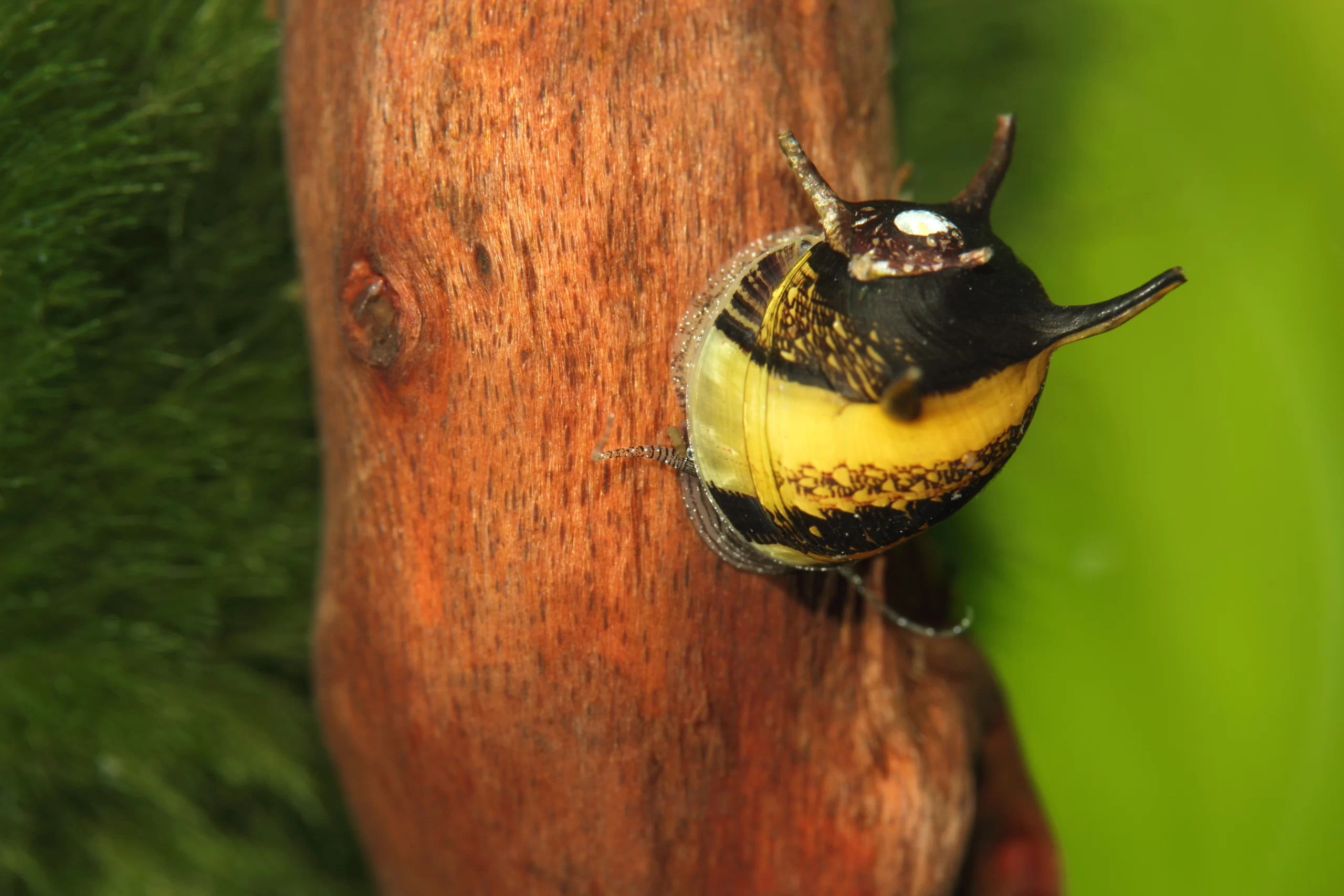

Staghorn snails (Clithon sp.)
Antlered snails are one of the most popular animals when looking for an aquarium snail. Their “antlers” make them stand out clearly from other snails. With this and with their beautiful patterning, these aquarium inhabitants fit into any aquarium and are an eye-catcher in the process. In addition, antler snails help to prevent algae and food debris. Therefore, they make an important contribution to the water quality.
Water parameters for staghorn snails
- PH value: 6.5 – 8.5
- GH (total hardness): 3° – 30° dGH
- KH (carbonate hardness): 3° – 30° dKH
- Temperature: 20° – 28°C
Appearance
Staghorn snails grow to about 2 cm in size under good conditions and with sufficient food. The colors and the pattern can vary strongly from animal to animal. Most often you can find these animals in a brown tone. However, this snail can also be found in olive green, black-yellow striped, red-brown or orange. In addition to the colors and the pattern, antler snails captivate with their unusual antlers. This consists of single spines, which are distributed over the whole snail shell. The shell has a round shape, in which the snail hides with a foot in gray tone.
Breeding
Breeding in the aquarium is not possible. The female animals lay their eggs in the water. However, for the larvae to survive, they need sea or brackish water. Therefore breeding or reproduction in the aquarium is impossible. For this reason, these snails are especially recommended if reproduction is not desired.
Keeping staghorn snails
Due to the size, staghorn snails can already be kept from about 20l. This makes them ideal co-inhabitants in a shrimp aquarium. However, with such small aquariums care should be taken that not too many snails are used. More than one snail per 10l of water should not be exceeded. In order for these animals to live for a long time, good water quality should be ensured. This means that regular water changes are mandatory. In addition, enough food should be available for the snails. Especially in the beginning this can often not be guaranteed, which is why staghorn snails should not be rushed into a new aquarium.